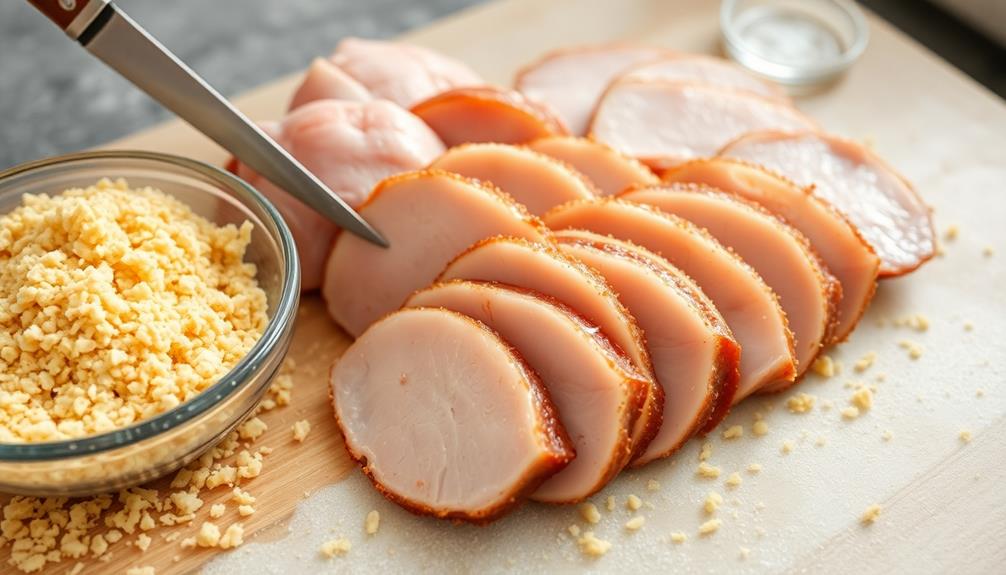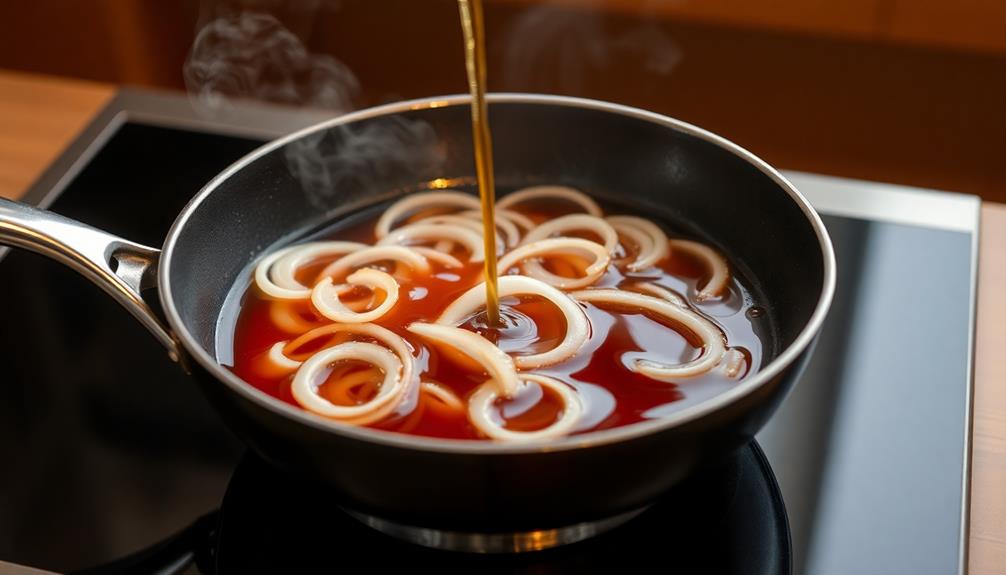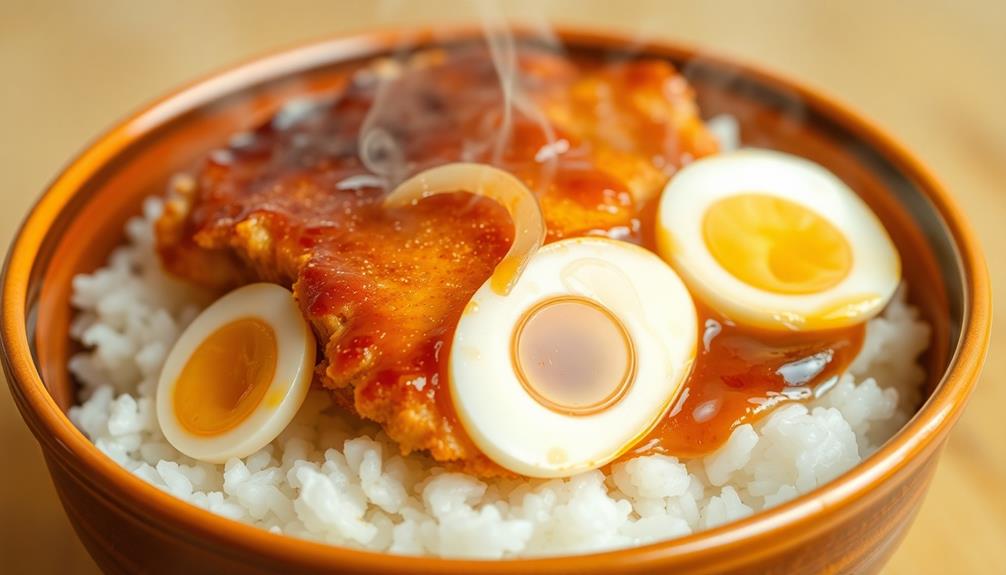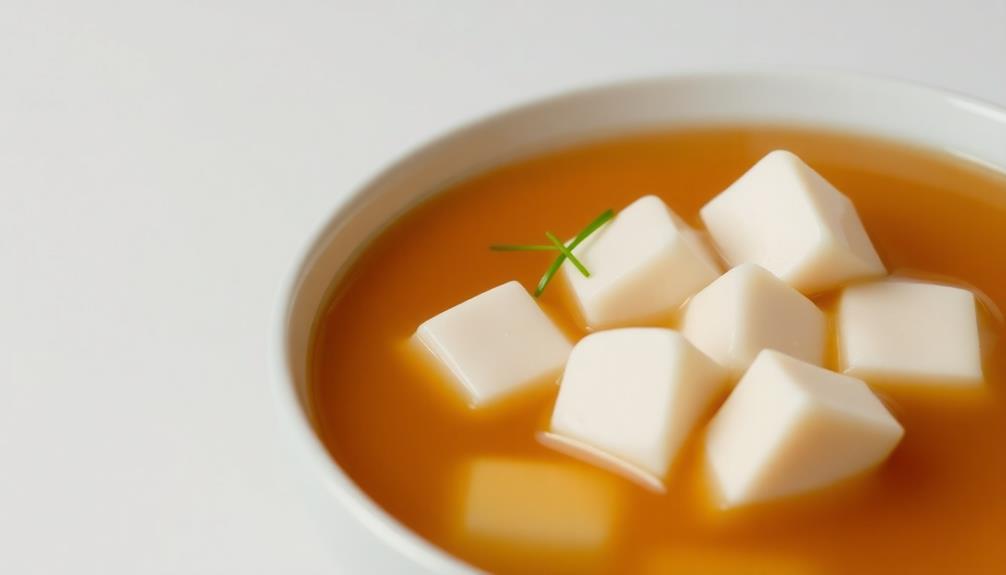Have you ever tried the classic Japanese dish, katsudon? This comforting pork cutlet bowl combines the crispy texture of tonkatsu with a savory-sweet egg mixture, creating a harmonious blend of flavors. Though it may seem like a simple dish, katsudon's origins date back to the early 20th century, reflecting the cultural exchange between Western and traditional Japanese cuisines. What makes this dish so special, and why has it become a beloved staple in Japanese cuisine? Dive into the history, recipe, and significance of katsudon to uncover the secrets behind its enduring popularity.
Key Takeaways
- Katsudon is a Japanese dish consisting of a pork cutlet (tonkatsu) served over a bowl of rice, topped with a savory egg mixture.
- The dish originated in early 20th-century Japan and is considered a comfort food, often enjoyed during festive occasions and casual meals.
- The key ingredients include crispy breaded pork, fluffy Japanese rice, beaten eggs cooked over the pork, and a flavorful broth made with dashi, soy sauce, and mirin.
- Katsudon is known for its balance of textures, combining the crispiness of the pork cutlet with the softness of the rice and the savory-sweet egg topping.
- Katsudon has gained popularity both in Japan and internationally, inspiring various regional variations and fusion dishes.
History
The origins of katsudon can be traced back to the early 20th century, when Japanese cuisine began incorporating Western influences. Pork cutlets, or tonkatsu, were a popular dish that eventually led to the creation of katsudon. The word "katsudon" is a combination of "katsu," meaning cutlet, and "don," referring to the rice bowl it's served in.
As Japanese chefs experimented with different toppings and sauces, they discovered that pairing the crispy pork cutlet with a savory egg-based sauce and serving it over rice created a delightful balance of flavors and textures. This dish quickly gained popularity, becoming a beloved comfort food across Japan.
Katsudon's versatility allows it to be enjoyed for any meal, from a hearty lunch to a satisfying dinner. Its combination of juicy pork, fluffy egg, and sticky rice makes it a satisfying and filling dish that has stood the test of time, becoming a cornerstone of Japanese culinary tradition.
Recipe
Katsudon, or pork cutlet bowl, is a beloved Japanese dish that combines tender, crispy pork cutlets with savory-sweet egg and onion in a warm, comforting rice bowl. The key to a perfect katsudon lies in the delicate balance of flavors and the satisfying texture of the pork. To achieve this, the pork cutlets must be carefully breaded and fried to golden perfection. Many households have their own tonkatsu recipe that has been passed down through generations, resulting in slight variations in flavor and texture. Whether enjoyed at a cozy restaurant or made at home with a cherished family recipe, katsudon is a comforting and satisfying meal that never fails to please the taste buds.
To begin, the pork cutlets are lightly breaded and fried to a golden brown, creating a crisp outer layer that gives way to juicy, tender meat. The cutlets are then simmered in a flavorful broth made with dashi, soy sauce, and mirin, allowing the flavors to permeate the pork.
- Pork loin or tenderloin
- Panko breadcrumbs
- Eggs
- Onion
- Dashi stock
- Soy sauce
- Mirin
- White rice
In a skillet, cook the pork cutlets until golden brown and crispy. Remove the cutlets and set aside. In the same skillet, sauté the onions until translucent. Pour in the dashi, soy sauce, and mirin, and bring the mixture to a simmer.
Return the pork cutlets to the skillet and let them simmer for a few minutes, allowing the flavors to meld. Finally, crack the eggs into the skillet and gently scramble them, creating a silky, savory topping for the pork and rice.
When preparing katsudon, it's important to use high-quality pork and to fry the cutlets at the right temperature to achieve the perfect crispy texture.
Additionally, adjusting the seasoning of the broth to your personal taste is recommended, as the balance of sweet, salty, and umami flavors is key to a truly delicious katsudon.
Cooking Steps
Alright, let's get started!
First, you'll need to prepare the pork cutlets for breading.
Bread the pork cutlets in a crispy panko coating, then fry them to perfection.
Next, sauté some onions in a skillet and add broth to create the savory base for your Katsudon.
Step 1. Prepare Pork Cutlets for Breading

To prepare the pork cutlets for breading, start by patting the meat dry with paper towels. This helps the breading adhere better.
Next, pound the cutlets lightly with a meat mallet or the bottom of a heavy pan to tenderize them and ensure even thickness. This will help the cutlets cook evenly.
Once the cutlets are prepped, set up your breading station. Place three shallow dishes or bowls side by side. In the first, add all-purpose flour. In the second, beat two or three eggs. In the third, combine panko breadcrumbs and any desired seasonings, like salt, pepper, or garlic powder.
Dredge each cutlet in the flour first, coating both sides. Then, dip it in the beaten eggs, letting any excess drip off.
Step 2. Bread Pork Cutlets in Panko

Breading the pork cutlets in panko is a straightforward process. First, set up your breading station with three shallow dishes. In the first dish, pour some all-purpose flour. In the second dish, beat a couple of eggs. In the third dish, pour a generous amount of panko breadcrumbs.
Dredge the pork cutlets in the flour, coating both sides evenly. Next, dip the floured cutlets into the beaten eggs, allowing any excess to drip off. Finally, press the eggy cutlets firmly into the panko, ensuring they're fully coated. Gently shake off any excess panko.
This three-step breading technique creates a crispy, crunchy exterior that seals in the juices of the pork. The panko breadcrumbs, with their light and airy texture, are the key to achieving the perfect fried pork cutlet.
Now that your cutlets are breaded, you're ready to fry them to golden-brown perfection.
Step 3. Fry Breaded Pork Cutlets

After breading the pork cutlets, you'll want to fry them to golden-brown perfection.
Heat a generous amount of oil in a large skillet over medium-high heat. Once the oil is shimmering, gently place the breaded cutlets into the hot oil. Be careful not to overcrowd the pan, as this can lead to uneven cooking.
Fry the cutlets for 2-3 minutes per side, or until they're crispy and golden brown. Use a pair of tongs to flip the cutlets, taking care not to disturb the breading.
When the first side is done, flip the cutlets and fry the other side until it's equally crispy.
Drain the fried cutlets on a paper towel-lined plate to remove any excess oil. The crispy breading should provide a satisfying crunch, while the pork inside remains juicy and tender.
Serve the fried pork cutlets hot, either on their own or as part of a Katsudon (pork cutlet bowl) dish.
Step 4. In a Skillet, Sauté Onions

With the pork cutlets now fried to golden-brown perfection, it's time to move on to the next step in creating the Katsudon dish.
In a large skillet, add a bit of oil and heat it over medium heat. Once the oil is shimmering, it's time to sauté the onions.
Slice the onions into thin half-moons, about 1/4 inch thick. Gently add them to the hot skillet, stirring occasionally. Allow the onions to cook for 5-7 minutes, or until they become soft and translucent. Be sure to avoid burning them.
As the onions sauté, the kitchen will fill with their sweet, caramelized aroma. This step is crucial for building the flavor profile of the Katsudon.
The softened onions will provide a savory base for the dish, complementing the crispy pork cutlets beautifully. Keep a close eye on the onions, adjusting the heat as needed, until they reach the desired level of tenderness.
Step 5. Add Broth to Onions

Next, you'll add the broth to the sautéed onions. Carefully pour in the chicken or vegetable broth, making sure to scrape up any browned bits from the bottom of the skillet. This will add depth of flavor to your dish.
Bring the mixture to a simmer, then reduce the heat to medium-low. Let the broth gently bubble for 2-3 minutes, allowing the flavors to meld.
Now, it's time to add the panko-breaded pork cutlets back into the skillet. Submerge the crispy cutlets in the aromatic broth, ensuring they're evenly coated.
Simmer for an additional 2-3 minutes, or until the pork is heated through and the sauce has thickened slightly. The pork should remain tender and juicy, complemented by the savory onion-broth mixture.
Once the pork is heated, you're ready to assemble your delicious Katsudon. Serve the pork cutlet over a bed of freshly cooked rice, spooning the rich onion-broth sauce over the top.
Final Thoughts
Katsudon, the pork cutlet bowl, is a delightful Japanese dish that encapsulates the perfect blend of crispy, savory, and comforting flavors.
As you've now completed the main steps, it's time to savor the fruits of your labor. The pork cutlet's golden crust, the fluffy egg, and the sweet, tangy sauce come together to create a harmonious masterpiece.
Don't forget to garnish your katsudon with freshly chopped green onions for a pop of color and a subtle crunch.
This dish is a true celebration of Japanese cuisine and the art of balancing textures and flavors.
Whether you're enjoying it for a cozy weeknight dinner or a festive gathering, katsudon is sure to leave you feeling satisfied and transported to the culinary wonders of Japan.
Embrace the joy of this versatile and delectable dish, and savor every bite as you bask in the comforting warmth of this Japanese classic.










